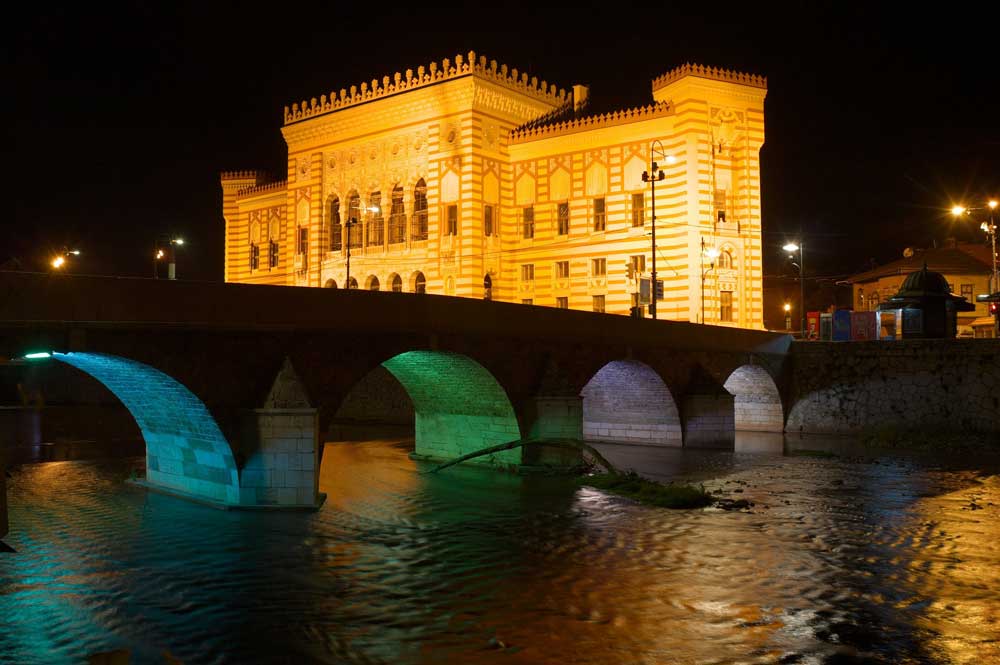Sarajevo

Sarajevo at night
Sarajevo today is the very image of a thriving European capital, with chic restaurants, upscale art galleries and vibrant nightlife.
The high-rise towers of the modern city sit side by side with elegant Austro-Hungarian mansions, nudging up in turn against the Ottoman heart of the old city.
Much of the war damage has been repaired, but here and there are tell-tale walls pockmarked with bullet holes and “ Sarajevo roses” - splashes of red cement that mark the spots where locals fell victim to sniper fire or mortar attack.
The main walking street Ferhadija begins at the Eternal Flame, a fire that is kept burning at all times commemorating the triumph over fascism after WWII.
The street is lined with shops, cafes and art galleries and a leafy public square where old men gather around a giant communal chess set.
As you walk down Ferhadija to the old city you pass the beautiful Serb Orthodox church, the honey-coloured Catholic cathedral, the old Gazi-Husrev Bey Mosque and a synagogue, all within five minutes and evidence of the city's remarkable diversity.
No wonder why Sarajevo was dubbed as the Jerusalem of Europe.
The heart of the old city, Bascarsija, is a warren of narrow, cobbled streets lined with restaurants, bars and low-roofed, wooden shops selling everything from Turkish coffee sets to gold and silver jewellery.
Mosques and minarets point to 400 years of Turkish rule, and pigeons flutter in squares lined with cafes and adorned by ornate fountains.
The ubiquitous smell of cevapi, grilled sausages served with pitta bread, spices and coffee drifts through the streets.
Nearby, on the banks of Miljacka river, stands the majestic shell of the old National Library, its wonderful ornate facade currently being restored after being shelled in 1992, 100 years to the day after it was opened.
Although the building remains empty, exhibitions, talks and concerts are being held there.